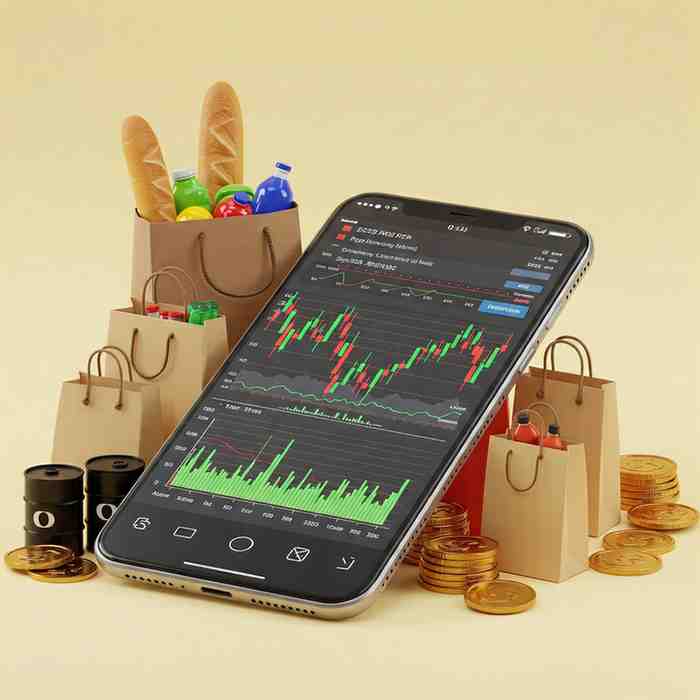
What are Commodities? Understanding the Basics
What are Commodities? Understanding the Basics
Ever wondered what makes the price of gasoline at the pump fluctuate? Or why the cost of your weekly grocery bill seems to change? The answer, in many cases, lies in the fascinating world of commodities. These raw materials are the fundamental building blocks of our global economy, and understanding them is key to grasping how the world around us functions financially. So, what exactly are these essential raw materials? Let’s dive into the basics.
Thank you for reading this post, don't forget to subscribe!What Exactly Are Commodities?
At its core, a commodity is a basic good used in commerce that is interchangeable with other goods of the same type. Think of it like this: one bushel of a specific grade of wheat is essentially the same as another bushel of the same grade, regardless of who produced it. This fungible and interchangeable nature is a defining characteristic of commodities.
Imagine different barrels of crude oil from various sources. While they might have slight variations, they can generally be refined and used for the same purposes. This interchangeability is what makes them tradable on a large scale.
The Diverse World of Commodities
The world of commodities is vast and diverse, but we can broadly categorize them into a few key sectors:
- Agriculture: These are the crops that feed the world. Examples include corn, wheat, soybeans, coffee, and sugar. Their prices are often influenced by weather patterns, planting seasons, and global demand for food.
- Energy: This sector fuels our transportation and power generation. Key energy commodities include crude oil, natural gas, and gasoline. Geopolitical events, production levels, and demand for energy heavily impact their prices.
- Metals: From the precious to the industrial, metals play a crucial role in manufacturing and technology. Examples include gold and silver (often seen as stores of value), as well as copper and aluminum (essential for construction and electronics).
The Driving Forces: Supply and Demand
Like most things in an economy, the prices of commodities are primarily driven by the fundamental economic principles of supply and demand.
- Supply: This refers to the availability of a particular commodity. For example, a drought in a major agricultural region can significantly reduce the supply of wheat, potentially driving its price up. Similarly, geopolitical tensions can impact the supply of oil.
- Demand: This refers to the desire and ability of consumers and industries to purchase a commodity. Increased global economic activity can lead to higher demand for energy and industrial metals, potentially increasing their prices. Conversely, a decrease in consumer spending might lower the demand for certain agricultural products.
Understanding the interplay between supply and demand is crucial to comprehending why commodity prices fluctuate.
A Glimpse into Commodity Markets and Trading
So, where are these raw materials bought and sold? This happens in commodity markets, which are essentially platforms where buyers and sellers come together to trade. While physical commodities do change hands, a significant portion of the trading occurs through futures contracts.
A futures contract is an agreement to buy or sell a specific amount of a commodity at a predetermined price on a future date. These contracts allow 1 producers (like farmers or oil companies) to lock in a price for their goods and allow buyers (like food processors or airlines) to secure their future supply. While this might sound complex, the basic idea is that these contracts facilitate the efficient trading of commodities. We won’t delve into the intricacies of hedging or speculation here, but it’s important to know that these markets exist to manage risk and ensure a smooth flow of essential materials.
Commodities and the Economy: A Tangible Link
Commodity prices have a direct and often significant impact on our everyday lives. The cost of raw materials like oil influences the price of gasoline and transportation, which in turn affects the cost of almost everything we buy. Similarly, fluctuations in agricultural commodity prices can lead to changes in the price of food at the grocery store.
Furthermore, commodity prices are often closely watched as indicators of broader economic health. Rising commodity prices can sometimes signal increasing inflation, as the cost of raw materials feeds into the prices of finished goods and services. Conversely, falling commodity prices might indicate slowing economic activity.
Commodities as an Investment
Beyond their fundamental economic role, commodities can also be considered an investment asset class. Investors might choose to include commodities in their portfolios for various reasons, including the potential for returns and diversification. Because commodity prices often don’t move in lockstep with stocks and bonds, they can potentially help reduce overall portfolio risk.
However, it’s crucial to understand that commodity investing can be complex and carries significant risk. This brief overview is for educational purposes only and should not be taken as financial advice. If you’re interested in exploring commodity investments, it’s essential to conduct thorough research and consult with a qualified financial advisor.
Why Understanding Commodities Matters
Understanding what commodities are and the basic forces that influence their prices provides valuable insight into the workings of the global economy. From the fuel in your car to the food on your table, commodities are integral to our daily lives. By grasping these fundamental concepts, you can better understand economic news, market trends, and the interconnectedness of the world around us.
We encourage you to continue exploring this fascinating area. Do you have any questions about specific commodities or how they impact your life? Feel free to ask in the comments below!
Related Blogs:
What is Commodity Trading?
Commodity vs Equity Market: A Beginner’s Guide to Understanding the Differences
How to Diversify Your Portfolio with Commodities: A Strategic Approach
Different Types of Commodities and Their Trading Characteristics
Beyond Stocks: Exploring the World of Commodities
Diversification Strategies: Combining Commodities and Equities
Disclaimer: This blog post is intended for informational purposes only and should not be considered financial advice. The financial data presented is subject to change over time, and the securities mentioned are examples only and do not constitute investment recommendations. Always conduct thorough research and consult with a qualified financial advisor before making any investment decisions.

